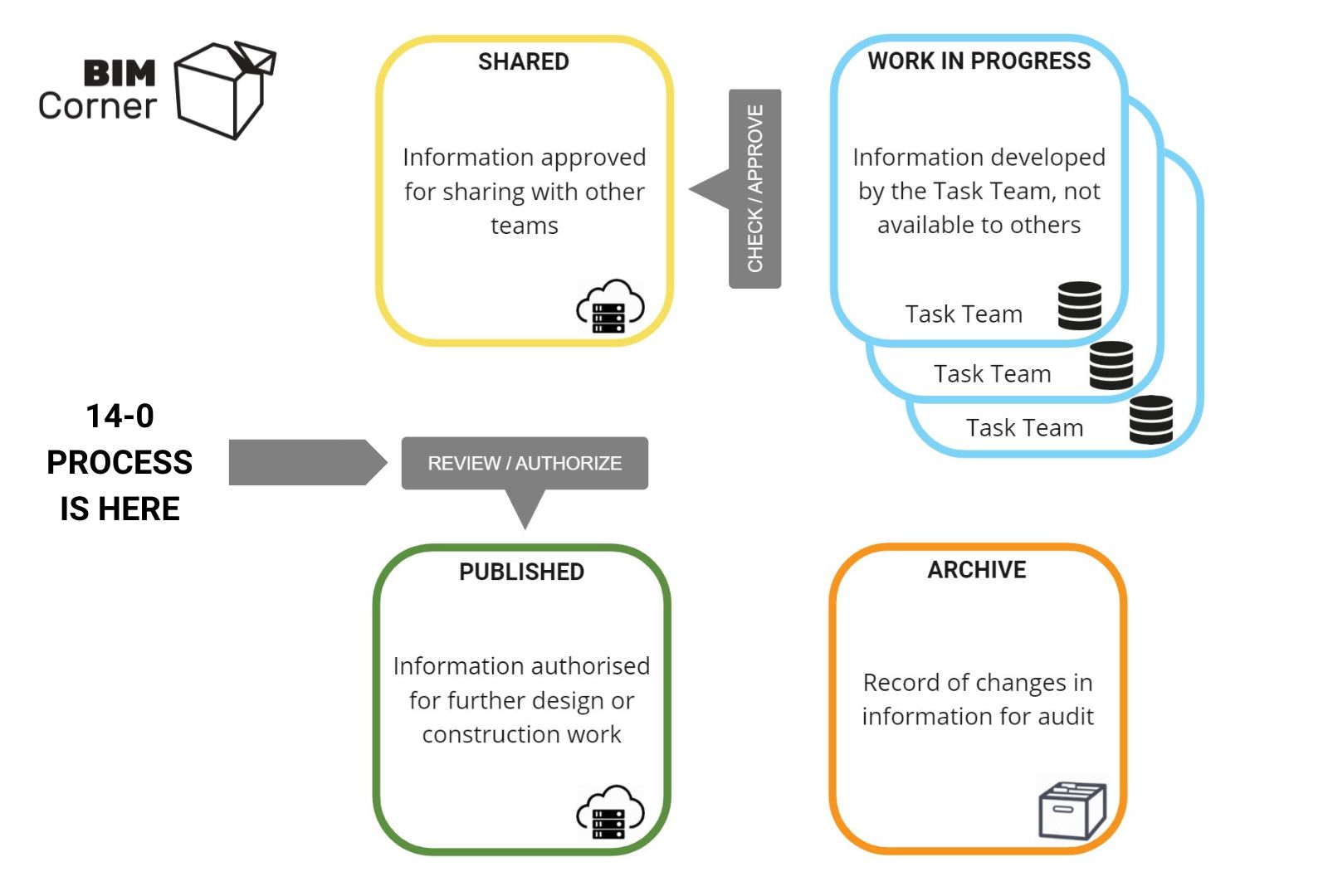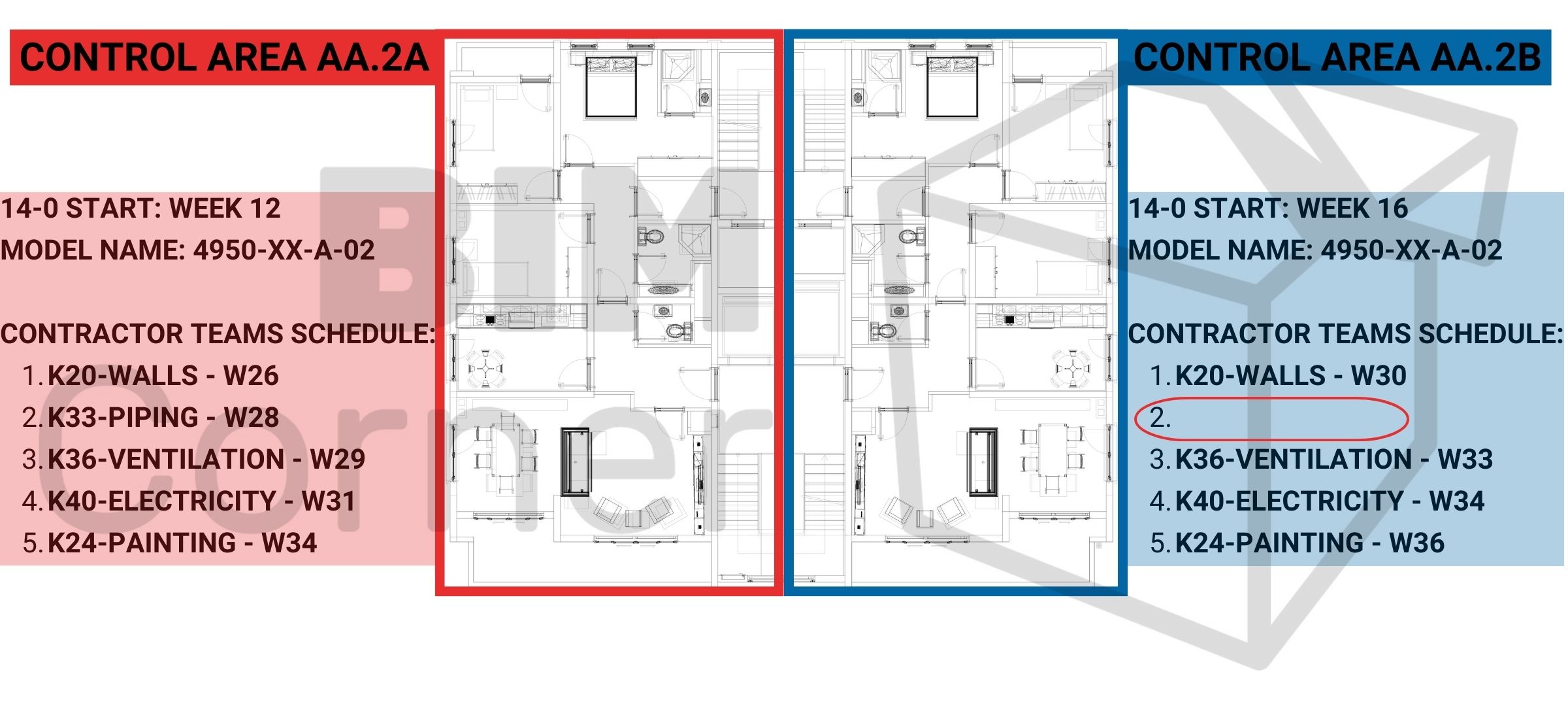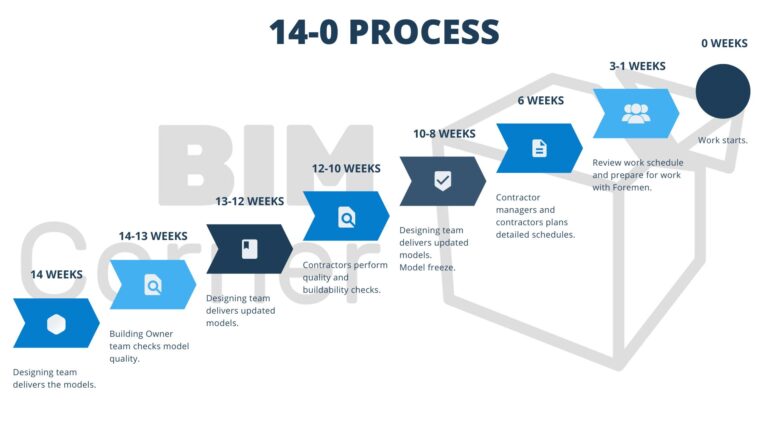The Construction industry, through its thousands of years of history, developed numerous processes and work methodologies. Some became redundant with the development of construction technology, whereas others are still relevant. In model-based construction processes, we discard flat paper drawings, yet we do not disregard well-functioning methodologies.
I mentioned in my previous article that the idea of a drawingless construction site is actually little about cutting the drawings themselves and more about improving the construction efficiency in general.
Indeed, our industry is struggling with it, we are aware of the looming ghosts of AEC. To name a few:
- last-minute changes
- separate information silos
- too little or too much information delivered
- errorful design
- late documentation deliveries
- too optimistic schedules
- bad logistics
- time waste
And so on.
Model-based construction projects look broadly to implement both proven solutions and inspirations as well as to develop new ideas to reduce the aforementioned obstacles. This article is about such a process.
Table of Contents
Challenges to solve with model-based construction processes
Interestingly, there were still some blind spots on the processes map defined in industry standards and guidelines. Standards cover aspects of information sharing (Common Data Environment), documentation management, model quality assurance (BIM Coordination), scheduling (Last Planner), construction methodology (Lean), and more.
Sykehusbygg (Norwegian Public Hospital Construction Agency) identified that there is missing a link between the handover of the design to the contractor and preparing each team for work in a given area.
They defined what can be tackled in a stage where a model is ready for publishing and the contractor has not yet begun to work in a given area. The process aims to:
- make all parties understand and commit to the model (accept that the model is good enough),
- resolve possible buildability issues early enough to implement changes,
- avoid last-minute changes to the highest possible level (by officially freezing the model and requiring a separate revision regime afterwards),
- assure accuracy in information delivery (not too much not too little),
create realistic schedules and stick to them (by engaging contractors during its creation – Lean principles), - assure the crew and logistics are complete and ready to work (by involving them in look-out meetings).
Afterwards, these goals were baked into a step-by-step process, where each step involves a different project stakeholder.
The idea behind the 14-0 process for model-based construction
The 14-0 process is at the heart of preparing the model and contractor for construction without drawings. It’s called so because it begins 14 weeks before any construction work starts in a given control area and finishes when the first contractor team begin execution. Read here what is a Control Area.
Throughout this process, three sides of the construction process, i.e. building owner, designer and contractor can check and comment on one another’s deliveries.
Firstly, it is the building owner and contractor that makes quality assurance of the designer delivery – the model. Afterwards, the construction manager presents the schedule and logistics assumptions to the execution teams for evaluation. In the end, the contractor and construction managers agree on the details of how the work has to be executed.
One process, many tasks
Since the process involves every project stakeholder working in a given control area of a project, the 14-0 process is divided into multiple smaller pieces depending on:
- the control area number (each one follows a separate process),
- the schedule of work for each control area (each one starts at the right time before the construction),
- each contractor team working in that control area (only involved contractors receive access and tasks).
Example
Control Areas AA.2A and AA.2B are 1000 sqm located on a second floor, they are in the same model. The process encompasses interior works. In this stage, we have teams responsible e.g.: K20-walls, K33-piping, K36-ventilation, K24-painting, and K40-electricity. They are all engaged in the 14-0 process.
The difference is that in AA.2B we don’t have any piping works and execution work starts 4 weeks later – in week 30. This results:
- 14-0 for control area AA.2A starts in week 12 and engaged are contractors K20, K33, K36, K24, K40 and K50
- 14-0 for AA.2B starts in week 16 and involves K20, K36, K24, K40 and K50
14-0 interfaces with other model-based construction processes
No procedure exists in the void. Neither does 14-0. It has been synced with other processes described in ISO and national standards. They are all tied together to ensure possibly the best flow. 14-0 process interfaces with many other processes, such as:
- Model development goes hand in hand with the Model Maturity Index process
- Common Data Environment is the place to store the models and manage their transition
- Issue Management process for fixing comments from other parties
- The work schedule is planned according to the Last Planner
- Control areas, task assignments and working methods follow principle of Lean Construction
14-0 Process in detail
Let us now scan through each week of this 14-week process.
Before the process begins, the control area in the model has to reach maturity of MMI350, which means “after multidisciplinary coordination”. Thus, the interdisciplinary coordination within the design team should have been already performed and collision and design issues resolved. Subsequently, the designers place the model in the “shared” state on the project’s CDE.
Our task management software, when the deadline arrives, automatically creates a main task called “14-0 process for control area XYZ” with subtasks for each stage (week).
IMPORTANT!
While one control area within the model is mature enough to go through the 14-0 process, others might not be! This is the reason for using the MMI index, as an addition to CDE’s information states of the model.
Process run-through
Week 14 to 13
Responsible for the first stage is a Building Owner. The person in the team checks the model for the required data. Site managers from the construction management team check the quality and the feasibility of execution work in the given control area.
If there are errors, the team sends them back to the designers in the form of either BCF files or actions in the sub-task.
Main outcome: correct model data from the perspective of a building owner.
Week 13 to 12
Week 12 to 10
Subsequently, each contractor involved in this control area receives a separate subtask with access to the corrected model and all necessary documentation to execute their work. They now have two weeks to check the models for collisions, errors, ambiguities and feasibility on site. The more they find, the better for them – the designer will have time to correct the errors and make a model to answer their needs in the form of technical solutions or additional properties.
By the end of week 10, the contractors send comments back to the designers.
Main outcome: checked buildability, contractor commits to the model.
Week 10 to 8
This time, the designers have two weeks to make corrections.
By the end of week 8, they publish the models after another revision. They now reach status MMI400 – ready for construction. There is a freeze of all the objects in the respective control area.
Main outcome: model ready for construction and frozen – no changes allowed.
Week 6
6 weeks into the start of work in the control area, all parties meet for a so-called lookout meeting. Each party has its fixed agenda items to discuss.
- Architects and engineers, present the project – general information about the work area, typical elements, and places of special attention.
- The construction manager representative informs about the assumptions of the schedule and logistics, presents how the coordination of works between different companies is to look like and discusses potential risks.
- The contractor comments on the points presented. He presents a plan for the delivery of materials (just-in-time principles) and execution of the work.
Main outcome: all party meets and exchange information about the model, work area and execution plans.
Week 3 to 1
In the last 3 weeks before the work begins. The contractor together with the work manager from the Building Owner team holds meetings with the foremen, where they discuss:
- details of the scope of work in the respective control area.
- once again, discuss logistics,
- supplies and deliveries,
- crew,
- resolve arising challenges
Main outcome: Foremen gets better acquainted with the management staff, work area and model
Week 0
On Monday at 7 a.m. in Week 0, the first construction work in the area begins and the 14-0 process for model-based construction concludes.
Main outcome: get the job done 😉
Summary
I reckon this procedure is at the core of setting prerequisites for model-based construction processes. It allows all parties to align the expectations and assumptions in the interface of design and execution. We tried to build this process as best we could – cut out e-mails, automate start-ups, move them to the cloud and rely solely on digital tools. Also, each party have persons responsible for managing the process and follow-up.
Does it mean that we have no errors in the model and no changes in the project?
No 🙁
But I can bet dollars to doughnuts that there are no projects on Earth that haven’t had them. That is the nature of construction projects. One thing is to do everything to minimise errors and the other is the process of managing necessary revisions. But this is a completely different topic.
The following article describes the Model-Based Construction series. In case it’s the first post you came across, I encourage you to read the introduction "Model-based construction – possibilities and challenges". I describe there the concept. All that to make sure you can get the most out of the series. Have a good read.
Check out the series about Model-Based Construction site:
1. PART – Model-based construction – possibilities and challenges
2. PART – Model-based construction process for the design and execution phase (this article)












